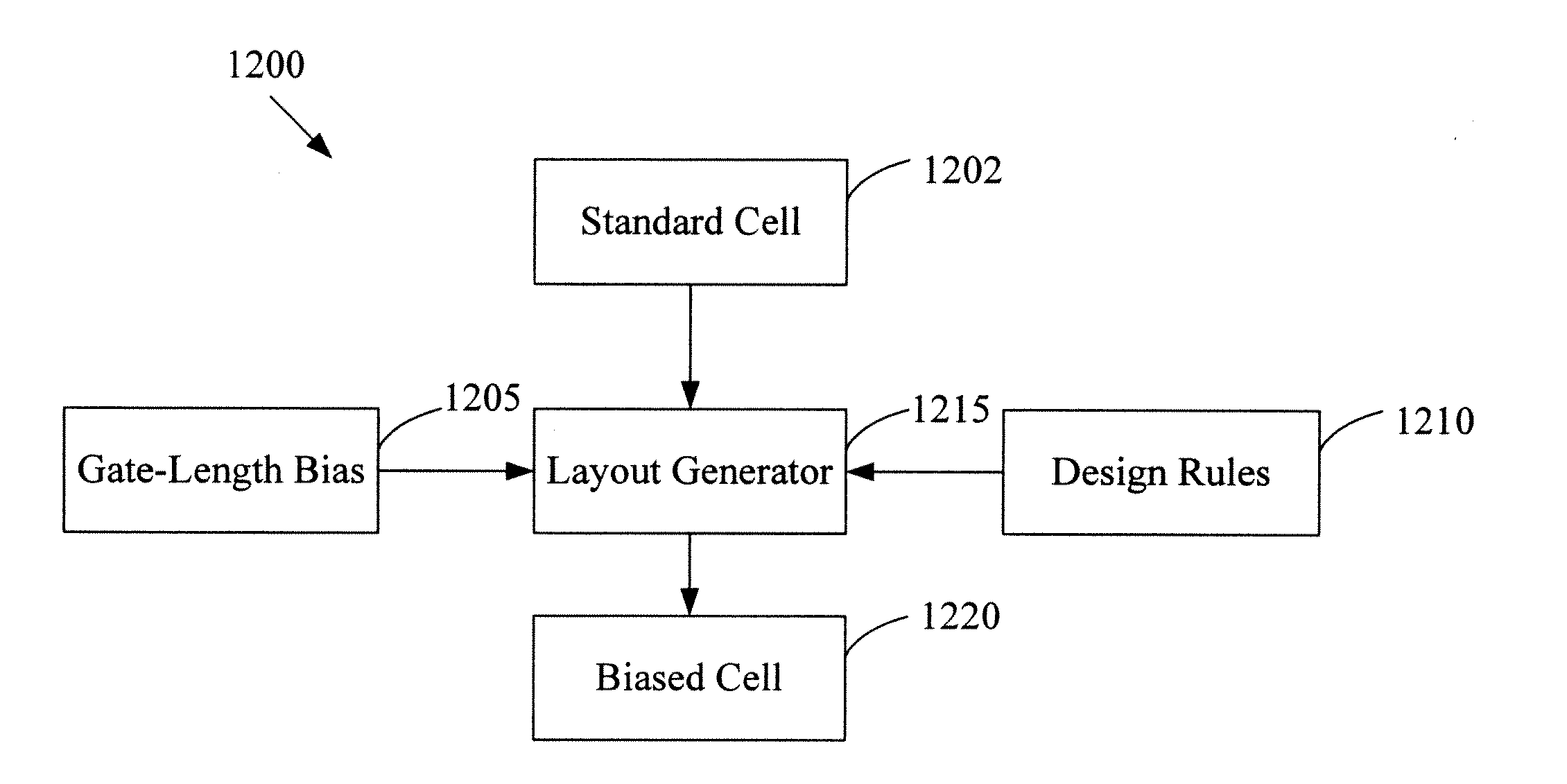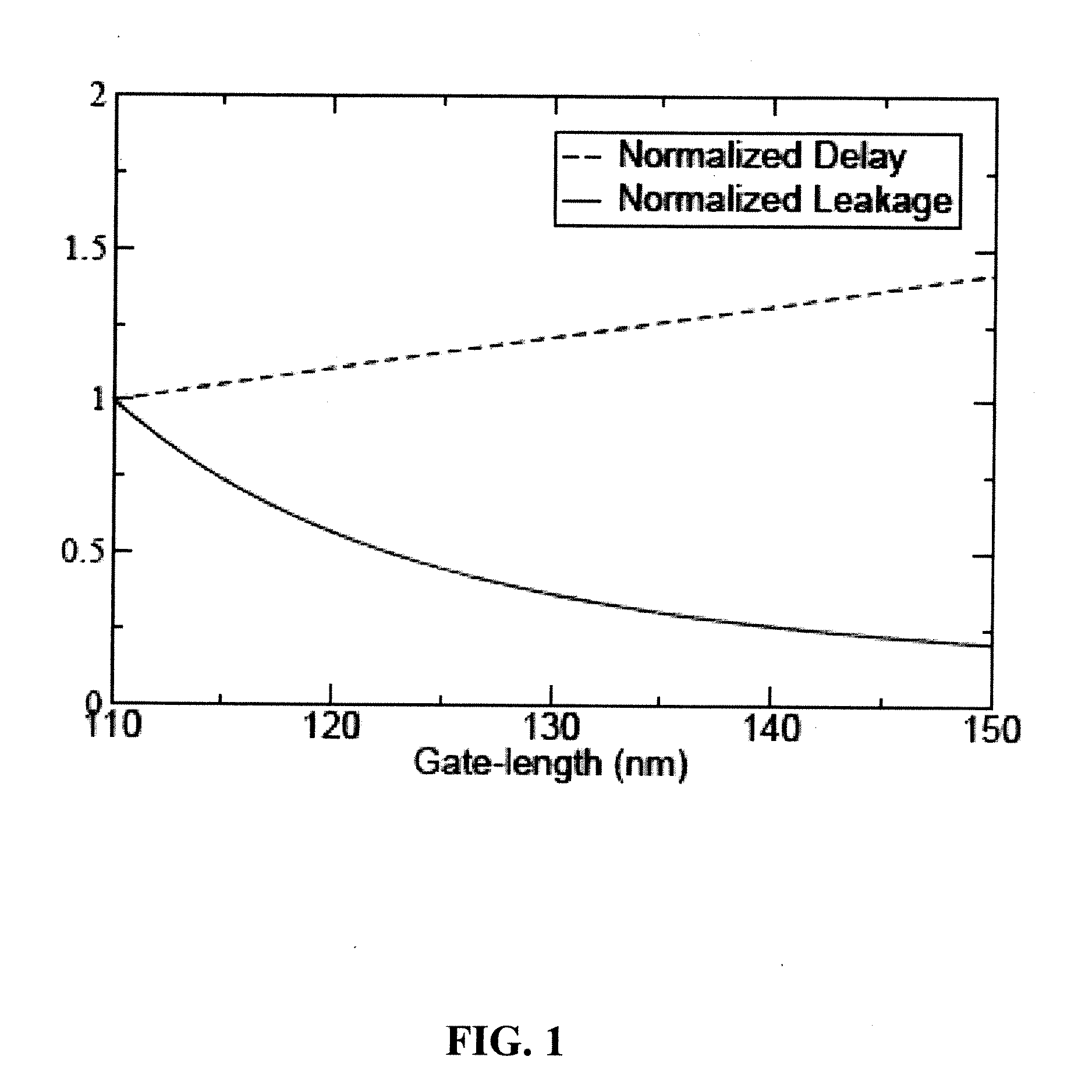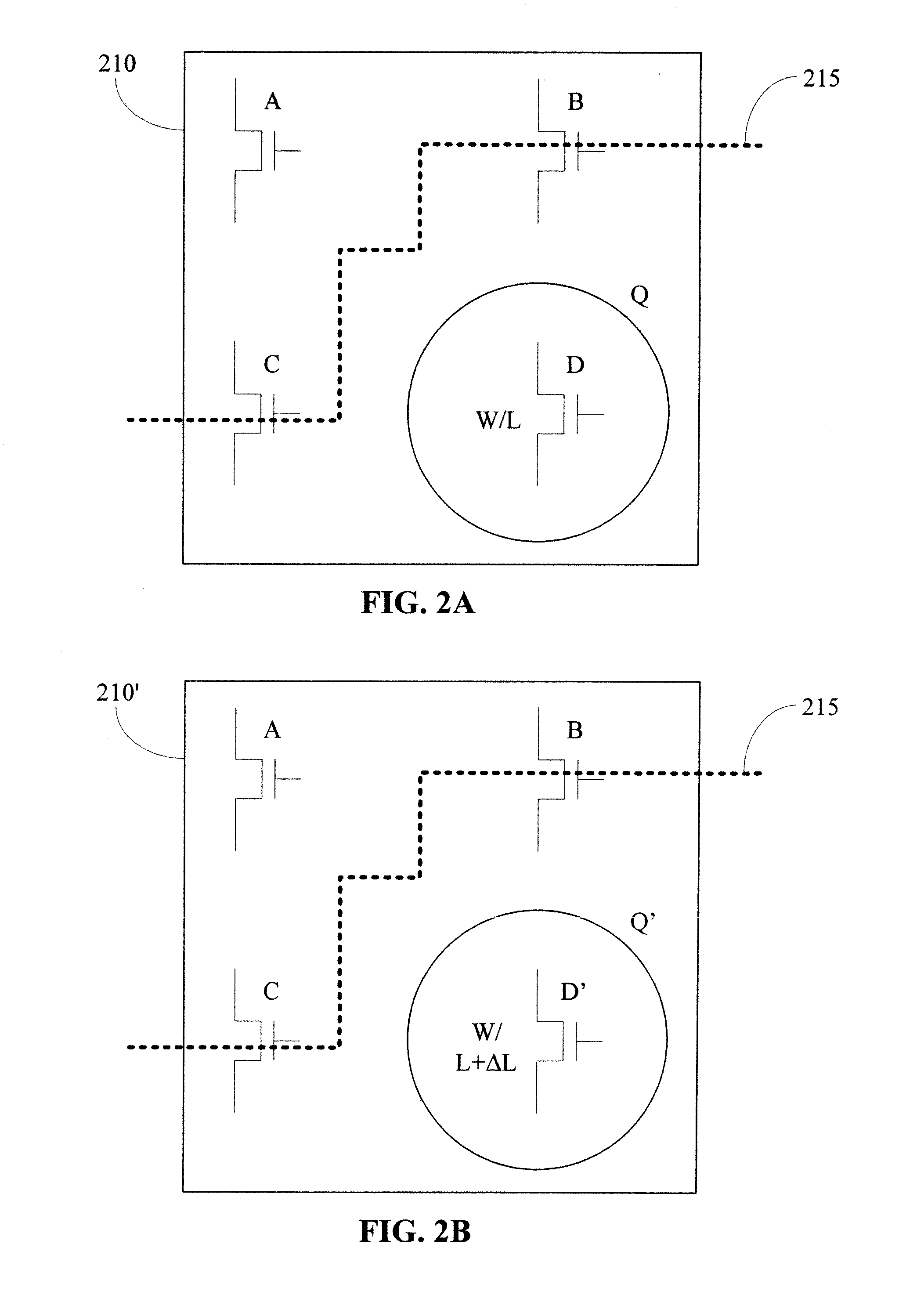Methods for gate-length biasing using annotation data
a gate-length biasing and annotation data technology, applied in the field of digital integrated circuit optimization, can solve the problems of linear delay, exponential decrease in leakage power, and impairing time delay performance only linearly, so as to reduce leakage power and variability of chips, reduce the impact of existing design and/or manufacturing processes, and increase the design space
- Summary
- Abstract
- Description
- Claims
- Application Information
AI Technical Summary
Benefits of technology
Problems solved by technology
Method used
Image
Examples
experimental examples
[0079]A test flow for validation of the LGate biasing methodology was implemented in the context of leakage reduction. Seven test cases were chosen for investigation. Details of the test cases used in the experiments are given in Table 3. For each test case, Table 3 shows the source of the test case, the number of cells in the circuit, delay, leakage power, and dynamic power. Sequential test cases (e.g., those beginning with “s”) were handled by converting them to combinational circuits by treating all flip-flops as primary inputs and primary outputs. The test flow was designed to validate an LGate biasing methodology in which CLLB was performed first followed by TLLB to show further reductions in leakage. Thus, while library generation and design optimization are discussed primarily with respect to the CLLB method, the discussion applies as well to the TLLB method.
TABLE 3TestDelayDynamicCaseSource#Cells(ns)Leakage (mW)(mW)s9234ISCAS′898610.4370.70740.3907c5315ISCAS′8514420.5561.441...
PUM
 Login to View More
Login to View More Abstract
Description
Claims
Application Information
 Login to View More
Login to View More - R&D
- Intellectual Property
- Life Sciences
- Materials
- Tech Scout
- Unparalleled Data Quality
- Higher Quality Content
- 60% Fewer Hallucinations
Browse by: Latest US Patents, China's latest patents, Technical Efficacy Thesaurus, Application Domain, Technology Topic, Popular Technical Reports.
© 2025 PatSnap. All rights reserved.Legal|Privacy policy|Modern Slavery Act Transparency Statement|Sitemap|About US| Contact US: help@patsnap.com



